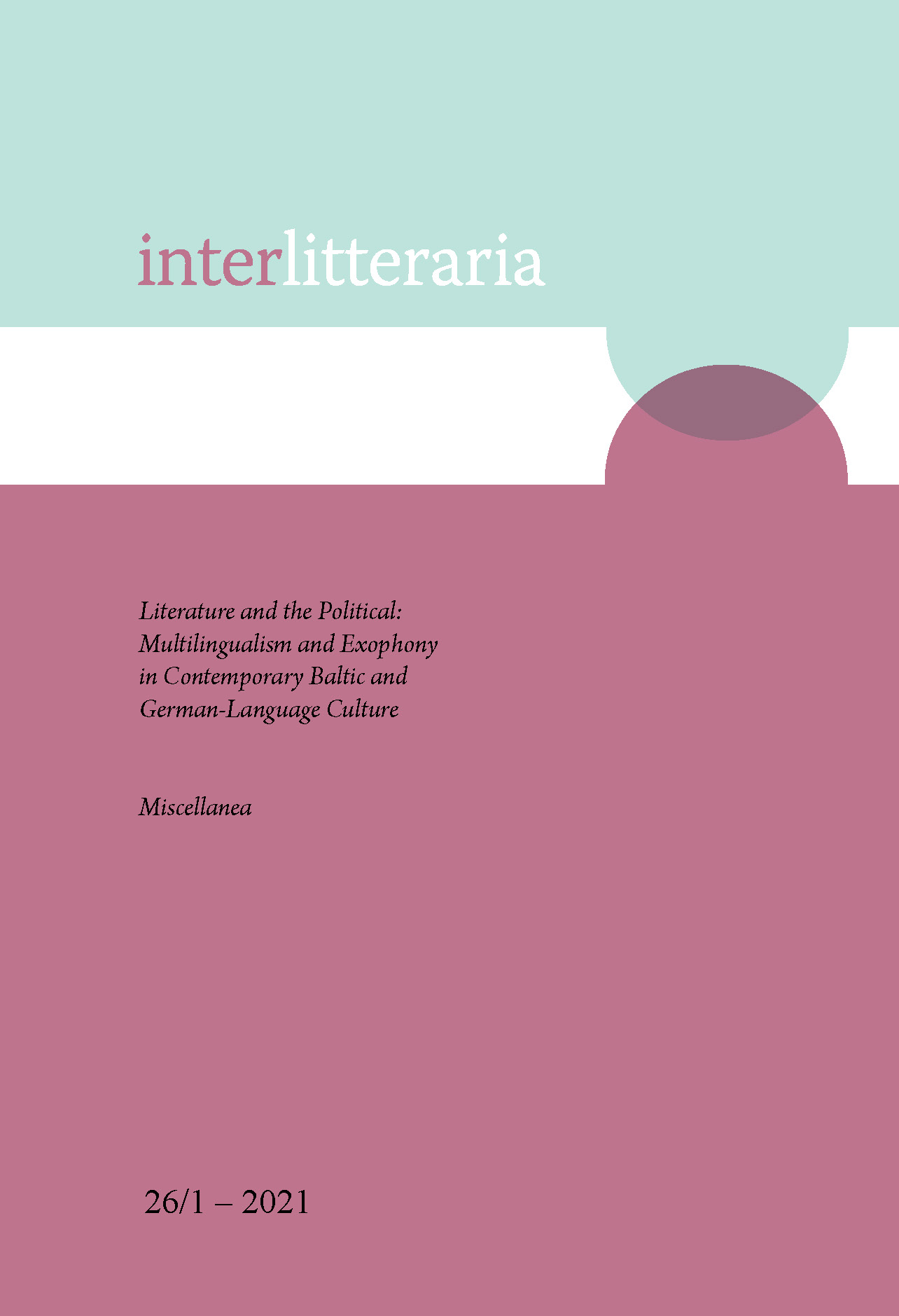„Die Sprache hat also ihren Ort.“ Zur Mehrsprachigkeit von Maja Haderlaps Roman Engel des Vergessens
DOI:
https://doi.org/10.12697/IL.2021.26.1.11Keywords:
multilingualism, territorial and historical preconditions of multilingualism, Slovenes in Carinthia, language change, language policy, politics and poetics of memory, Maja HaderlapAbstract
“Die Sprache hat also ihren Ort.” On Multilingualism in Maja Haderlap’s Novel Engel des Vergessens. Based on philological research on multilingualism and with regard to Maja Haderlap’s literary work in general this article deals with the specific form of multilingualism that can be observed in her novel Engel des Vergessens (2011). Maja Haderlap, born 1961 in Bad Eisenkappel/Železna Kapla, Carinthia (region in southern Austria), grew up with two languages, Slovenian and German. The authors of the article pursue the question to what degree her literary work and especially her novel can be characterised as multilingual and what kind of poetic multilingualism can be found there. They focus on the novel’s narrative and on the use of language(s), with a short historical excursus on the Slovenian minority in Carinthia as well as the difficult memory politics in Austria. Maja Haderlap not only writes about the territorial and historical preconditions of multilingualism in Carinthia but also inscribes these conditions in the text itself, characterising both the narrative and the language. Although the novel is the result of a shift from Slovenian to German, its multilingualism can be analysed on different levels: on the level of the relationship between discours and histoire – to refer to Genette’s narratological terms –, on the level of cultural codes of the Slovenian language within the novel’s German text, and in general with regard to the fact, that the text is written with the modes of expression of Slovenian and German or with the help of the ‘no man’s land’ between the languages. One can therefore – with respect to the terms of philological research – find both obvious and latent multilingualism and, thirdly, one can observe Mehr-Sprachlichkeit, a term that has been defined by Silke Pasewalck in previous articles.
Downloads
Downloads
Published
Issue
Section
License
The contents of Interlitteraria are published under CC BY-NC-ND licence.


